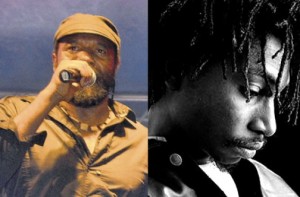By Howard Campbell—


PEGGY Quattro did not know what to expect when she arrived in Kingston to interview reggae star Garnet Silk for her Reggae Report magazine in February 1994.
The last time she saw the singer was five months earlier. He was being helped off the stage at a New York City nightclub, unable to complete a show due to what doctors later diagnosed as exhaustion.
He had not performed in concert since.
When Quattro showed up at Silk’s home in the St Andrew hills, his mood was completely different.
“He was gracious, he was funny. He was just being himself,” Quattro told the Sunday Observer.
The Ohio-born Quattro spent most of the day with the Rastafarian artist, who she said was prepared to discuss everything. Even rumors that his absence from the music scene was his addiction to hard drugs.
“He told me why he was not on a lot of shows and spoke about the drug stories. He said every man has faults but his wasn’t drugs,” she recalled.
Quattro and Zap Pow bassist Michael Williams started Reggae Report in 1983. It grew from a small newsletter into a monthly glossy that was, arguably, the biggest source for Jamaican music news in the 1990s.
Getting the Silk interview was a coup. He kept a low profile and had not done any interviews since the New York club breakdown.
He enjoyed an outstanding 1993 when he recorded a string of hits. He moved from a dancehall artist to doing overseas dates in the United States, United Kingdom, Japan, and the Caribbean.
Quattro said talk of cocaine use was still doing the rounds when they met. She didn’t believe it.
“Personally, I couldn’t imagine him on cocaine. He was all about Rasta,” she said.
At Silk’s home that day were his partner, Novlyn ‘Lovie’ Banton, some of his children and close friends, including dub poet and mentor Yasus Afari.
“What struck me was how real he was, there was nothing pretentious about him. You could see he loved his wife, he loved his children and his friends,” Quattro related.
Along with Afari and deejay Tony Rebel, Garnet Silk ushered in a new day for dancehall/reggae in the early 1990s. The genre had been dominated by controversial acts like Shabba Ranks and Ninja Man whose risqué and violent songs ruled the roost.

Silk came to the fore with a succession of culturally strong songs that won many youth over. Zion in a Vision, Nothing Shall Divide Us, Lion Heart, and Bless Me (Mighty Jah Jah) were some of the tracks that established him as a bona fide star.
Quattro believes he had the goods to go all the way, just like Bob Marley.
“With the right management and guidance, he could have been the next messenger,” she said.
He never realised that lofty mission. Silk and his mother died in a fire at her home in Hatfield district, Manchester, on December 9, 1994. He was 28 years old.
Peggy Quattro ended the print edition of Reggae Report in 1998. The following year, she launched the ReggaeReport.com website and has plans to establish the Reggae Report Archive, an online operation that revisits the publication’s vast catalogue of stories and photographs.


You must log in to post a comment.